Until last year, the few tourists who visited the small west African town of Ouidah were likely headed to the Gateway of No Return, a massive monument to the area’s bleak history as a slave trading hub.
But the town may soon become known for an attraction of an entirely different sort: The first sub-Saharan Africa museum dedicated exclusively to contemporary African art.
The Zinsou Museum, installed in an ornate 100-year-old villa, has attracted 13,000 visitors since its launch in November — an impressive tally for an out-of-the-way town in the sparsely visited nation of Benin.
The reputation — and monetary value — of contemporary African art has steadily risen in recent years. Curators and collectors from North America and Europe frequently fly in to artistic hubs like Lagos, Nigeria seeking new talent and new work by established names.
But for Marie-Celine Zinsou, who spearheaded the creation of the museum, better notoriety for African artists abroad was not enough.
While on a trip to Benin with a French based children’s charity in 2005 she wanted to take a group of youths to an art museum.
“I found that there wasn’t any structure to show the children work from their own continent,” she told AFP.
Zinsou, the grandniece of one of Benin’s first presidents, secured an investment from her father Lionel, a businessmen with duel French and Benin nationality who previously worked for France’s Foreign Minister Laurent Fabius.
The Zinsou foundation opened in 2005 at a building in Benin’s largest city of Cotonou, where access was free to view both African and foreign art.
The foundation attracted four million visitors in eight years, mostly students under the age of 15.
As it became more established, the Zinsou Foundation began acquiring a diverse collection of contemporary African art, with the goal of opening a permanent museum.
The Villa Ajavon, an expansive cream-colored home built in 1922 by a Togolese trader, drew Zinsou to Ouidah, a town of 60,000 people some 40 kilometers from Cotonou.
“When we found out this sublime building was available, we jumped at the chance,” said Zinsou.
“Its style is very symbolic, very specific to this region,” she said.
The slave trade monument in Ouidah is a massive archway with two long lines of chained men in bas-relief along the top, to suggest the group is being marched into the Atlantic Ocean.
Hundreds of thousands of Africans were believed to have been condemned to slavery from the beach below the archway.
The Villa Ajavon in a sense defies that history, having been built by the descendants of slaves who returned from the Brazilian city of Bahia in a style influenced by both Brazilian and African architecture, said Zinsou.
The villa falls along a quiet dirt road lined with run-down bungalows and is just a few hundred meters from the Temple of Pythons, a major center of voodoo worship which retains powerful influence in Benin.
While the villa needed to be renovated to host a museum, Zinsou said the priority was to preserve its original structure.
Air conditioning in main hall was therefore forbidden so as to not disfigure the exterior, so those who wants to see the museum’s collection must be prepared to sweat.
Air circulates through sunlight corridors where the works of leading African artists are on display, including: Ethiopia’s Mickael Bethe-Selassie, Frederic Bruly-Bouabre of Ivory Coast and Cheri Samba of the Democratic Republic of Congo.
Like in Cotonou, the entrance in Ouidah is free and the visitors are typically very young.
Eight-year-old Achmine Atindehou said she was on her second visit to the Zinsou Museum and had already grown very confident in her arguably peculiar tastes.
“I like the drawing ‘Living Memory’ because it is nice. It is about death,” she said.
Museum director Claude Aktome said often children come with their school classes and then persuade their parents to bring them back.
Romuald Hazoume has exhibited his paintings, sculptures and photographs in London and New York, but became emotional when recalling his first showing in Benin, the country of his birth.
“It was the first time that I saw young people from Benin coming to admire my work,” he told AFP. “I cried that day. I was so moved.”
Former slave trade town to become African art hub
Former slave trade town to become African art hub
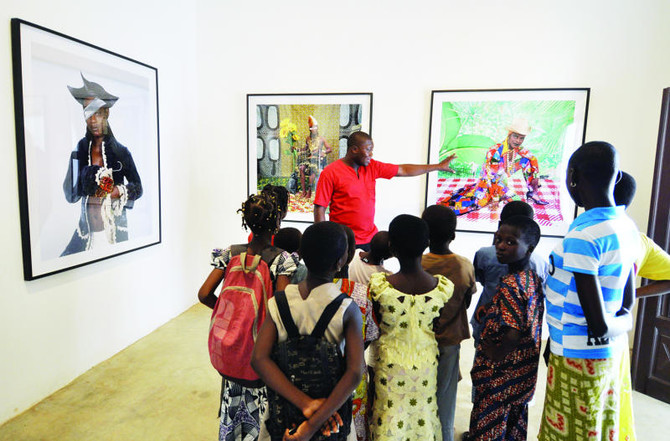
Moroccan director Asmae El-Moudir joins Cannes’ Un Certain Regard jury
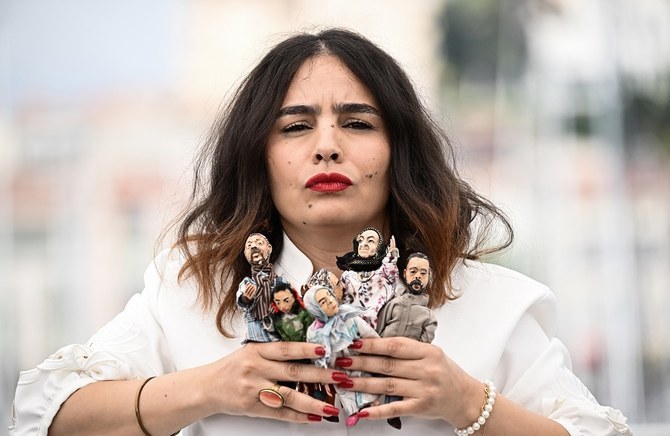
DUBAI: The Cannes Film Festival announced on Thursday that Moroccan director, screenwriter and producer Asmae El-Moudir will be part of the Un Certain Regard jury at the 77th edition of the event, set to take place from May 14-25.
She will be joined by French Senegalese screenwriter and director Maïmouna Doucouré, German Luxembourg actress Vicky Krieps and American film critic, director, and writer Todd McCarthy.
Xavier Dolan will be the president of the Un Certain Regard jury.
The team will oversee the awarding of prizes for the Un Certain Regard section, which highlights art and discovery films by emerging auteurs, from a selection of 18 works, including eight debut films.
El-Moudir is the director of the critically acclaimed film “The Mother of All Lies.”
The movie took the honors in the Un Certain Regard section, as well as winning the prestigious L’oeil d’Or prize for best documentary at the festival in 2023. The film explores El-Moudir’s personal journey, unraveling the mysteries of her family’s history against the backdrop of the 1981 bread riots in Casablanca.
El-Moudir is not the only Arab joining the Cannes team.
Moroccan Belgian actress Lubna Azabal this week was appointed the president of the Short Film and La Cinef Jury of the festival. The La Cinef prizes are the festival’s selection dedicated to film schools.
Second Ritz-Carlton Reserve in Saudi Arabia planned for Neom
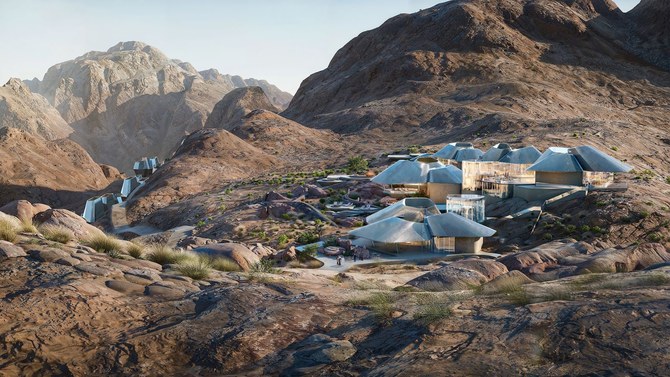
DUBAI: Marriott International, Inc. announced on Thursday that it has signed an agreement with Neom to open its second Ritz-Carlton Reserve in Saudi Arabia.
The hotel is anticipated to open in Trojena, a year-round mountain destination located in the northwest region of the country.
The resort is expected to feature 60 expansive one-to-four-bedroom villas. Plans also include a range of amenities including a spa, swimming pools and multiple culinary venues.
Chadi Hauch, the regional vice president of Lodging Development Middle East, Marriott International said in a statement: “Together with Neom, we look forward to bringing this ultra-luxury experience to Trojena. This signing also marks an important addition to our portfolio in Saudi Arabia where we continue to see a strong demand for our luxury brands.”
“Trojena is a rare destination, and we are delighted that Ritz-Carlton Reserve has hand-picked the mountains of Neom for their next property. Together we will create an experience that can’t be recreated anywhere else. Our visitors and residents will experience a sanctuary that will capture the magic of Saudi Arabia, embracing ultimate luxury in an unforgettable location,” executive director and Trojena region head Philip Gullett said in a statement.
Trojena, one of the flagship developments within Neom, is being developed and positioned as a year-round adventure sports destination that will include activities such as skiing, water sports, hiking and mountain biking. It will also include apartments, chalets, retail, dining, entertainment, leisure, sports and recreational facilities, and other hospitality offerings, including a W Hotel and a JW Marriott Hotel.
Ritz-Carlton Reserve currently boasts a collection of only six properties in destinations including Thailand, Indonesia, Puerto Rico and Mexico.
The Arab world at the Venice Biennale: Artists explore themes of identity, immigration, history
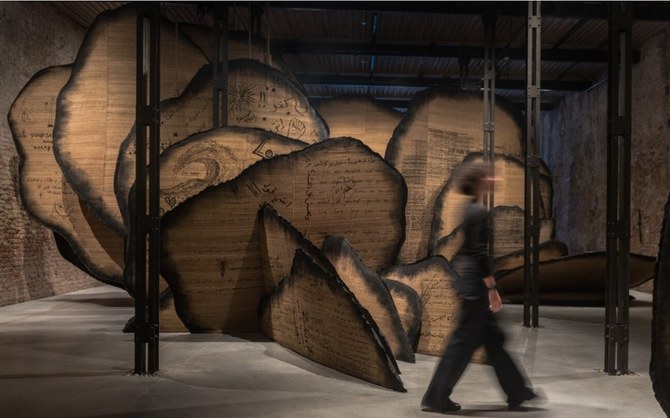
VENICE: No event in the international art scene is more anticipated, or debated, than the Venice Biennale. This year’s edition, “Foreigners Everywhere,” curated by Adriano Pedroso from Brazil, features 331 artists and 86 nations, including four Gulf countries as well as Lebanon and Egypt.
Saudi Arabia
Women’s voices chanting in unison fill the air of the Saudi Pavilion at Venice this year. “Shifting Sands: A Battle Song” was created by Saudi artist Manal AlDowayan, and hundreds of women from across the Kingdom participated in its creation. The exhibition, which includes large-scale installations in the form of desert roses filled with writing and drawings by the Saudi female participants whom AlDowayan worked with, aims to showcase the evolving role of women in the Kingdom while also striving to dispel media narratives that have long defined them. The chanting is derived from traditional battle songs once performed by Saudi men before they went into battle. Here they are chanted by women in a powerful chorus of strength and resilience, backed by recordings of the wind passing through sand dunes. The work, AlDowayan tells Arab News, “is about change, subtle changes — like those of a sand dune — the surface changes, but the core stays the same.”

UAE
Emirati artist Abdullah Al-Saadi is presenting “Sites of Memory, Sites of Amnesia” at the National Pavilion of the United Arab Emirates. It’s an introspective show consisting of drawings, sculptures, paintings and installations charting Al-Saadi’s travels around his homeland. “Traveling and understanding the natural world around me has always been an important part of my work,” Al-Saadi, who has even used rocks from the Emirates as his ‘canvas’ for some of the works, told Arab News. “Through this presentation in Venice, I hope visitors will enjoy tracing the travels I have taken over the past few years and also think about the world around us, and our place within it.”
Visitors will also be presented with gifts: maps and scrolls in colorful traditional chests from the region, which will be removed and presented to guests by actors from the UAE.
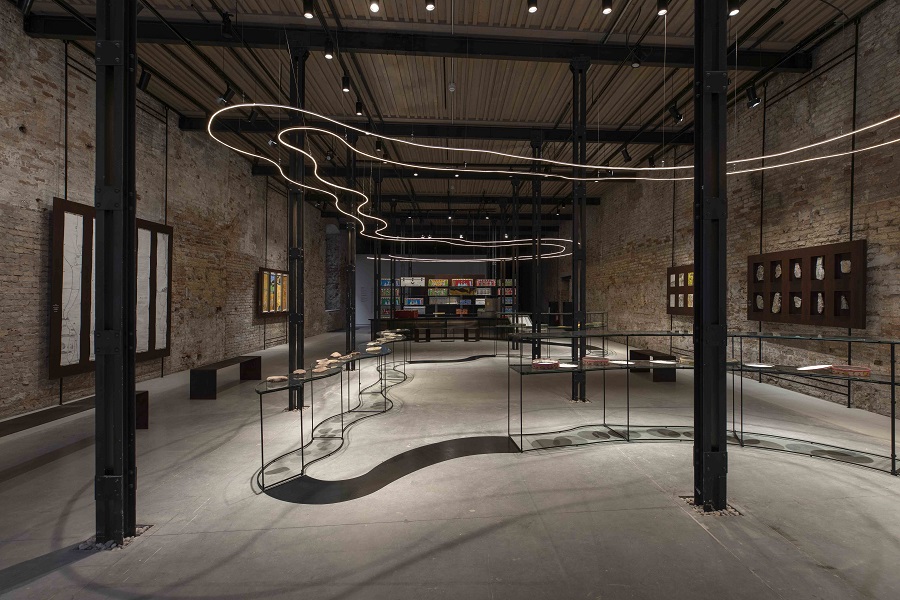
Qatar
While Qatar doesn’t have a national pavilion at the biennale, it is presenting “Your Ghosts Are Mine: Expanded Cinemas, Amplified Voices” — a group show of films by artists from across the Arab world, Africa and South Asia, as well as video installations from the collections of Mathaf: Arab Museum of Modern Art and the Art Mill Museum (scheduled to open in 2030). All the films were backed by the Doha Film Institute.
“For me, it was important to show movies reflective of the theme of the biennale — so, revolving around immigration, foreigners, personal diaries and self-portraits and stories from women — all coming from independent (artists) in the Global South, whose voices are not always shared,” the Paris-based curator Matthieu Orlean told Arab News.
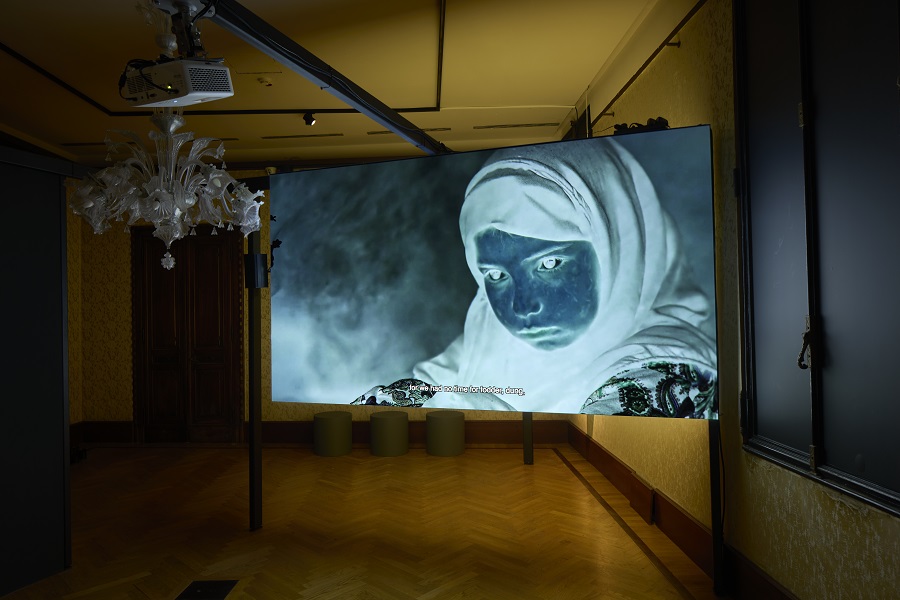
Egypt
Alexandrian-born artist Wael Shawky has created “Drama 1882,” a 45-minute film for which he also composed the music, for Egypt’s national pavilion, which — in the first week of the biennale at least — has proved to be one of the most popular pavilions at this year’s event.
The film is based around Egypt’s nationalist Urabi revolution against imperial influence in the late 19th century and Shawky uses historical and literary references as starting points from which to weave together a story that fuses fact, fiction and fable, while also exploring national, religious and artistic identity.
“I worked with performers who enacted a play in a theater for the film,” Shawky told Arab News. “The film strives in part to connect the idea of history to drama — drama regarding the connection to catastrophe and drama regarding cynicism. I like to analyze the authenticity of history, especially Egyptian history. When one makes films about history there is this gap between truth and myth.”

Lebanon
Lebanese artist Mounira Al-Solh’s multimedia installation “A Dance with Her Myth” combines drawing, painting, sculpture, embroidery, video, and audio, and guides viewers through ancient Phoenicia. The piece, Al-Solh explains to Arab News, is inspired by the tale of Europa, the daughter of a Phoenician king who was abducted from the city of Tyre in Lebanon by the Greek god Zeus, who had transformed himself into a white bull to trick her into riding him, then took her off into the sea.
“The (work) pays tribute to the ancient multicultural heritage of Lebanon,” Al-Solh says.
In the center of the pavilion is an unfinished boat, that Al-Solh says references “the tension that women still face today, despite their emancipation.”
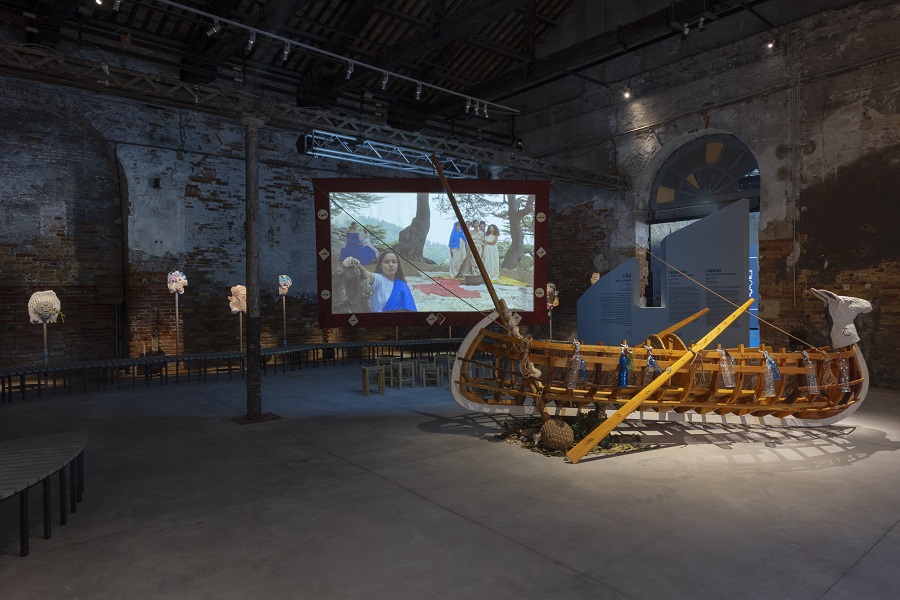
Oman
Oman’s second participation in the biennale, is an exhibition titled “Malath — Haven.” It includes work from five Omani contemporary artists: Ali Al-Jabri, Essa Al-Mufarji, Sarah Al-Aulaqi, Adham Al-Farsi and Alia Al-Farsi (who also curated the show). “We used the word ‘haven’ in the title because, since antiquity, foreigners — including the Romans, Portuguese and Indians — have visited Oman,” Alia Al-Farsi told Arab News. The works on display — from Al-Farsi’s own colorful and expressive mixed-media murals (such as “Alia’s Alleys,” pictured here) to Al-Aulaqi’s “Breaking Bread,” which includes a large sculpture of a niqab made from silver spoons — reflect both traditional and contemporary life in Oman.
“As an Omani creative with an international background, my aim was for the exhibition to serve as a sanctuary for visitors and travelers, allowing stories to unfold and intertwine, mirroring how our country finds its richness in intercultural dialogue,” the curator said in a statement.
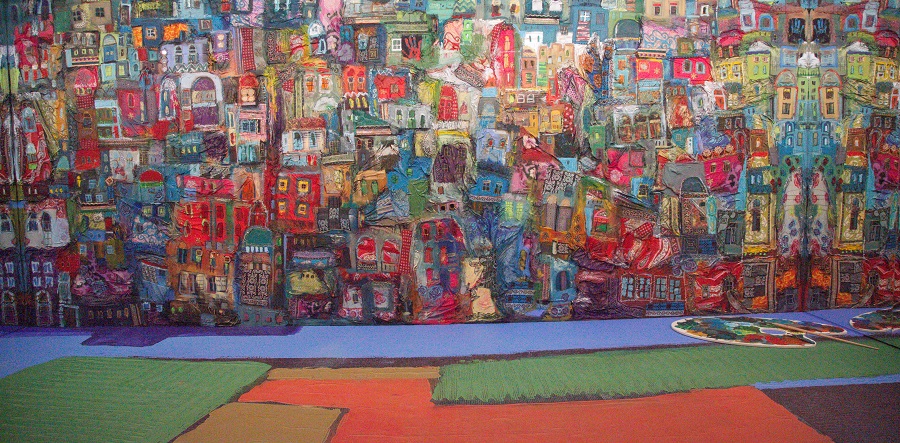
Arab-American Heritage Month: Sama Alshaibi — ‘I’m trying to change this idea of what an Arab woman is’
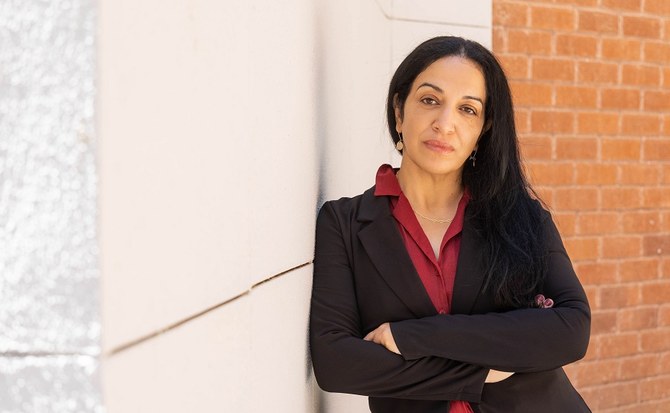
DUBAI: The fourth in this year’s series focusing on contemporary Arab-American artists in honor of Arab-American Heritage Month.
Born in Basrah to an Iraqi father and a Palestinian mother, Sama Alshaibi is an Arizona-based professor and artist who has mostly devoted her 20-year career to video, photography and performance art.
During the Iran-Iraq war of the Eighties, Alshaibi and her family moved around the region, living in Saudi Arabia, the UAE, and Jordan, before eventually settling in the American Midwest when she was 13 years old.
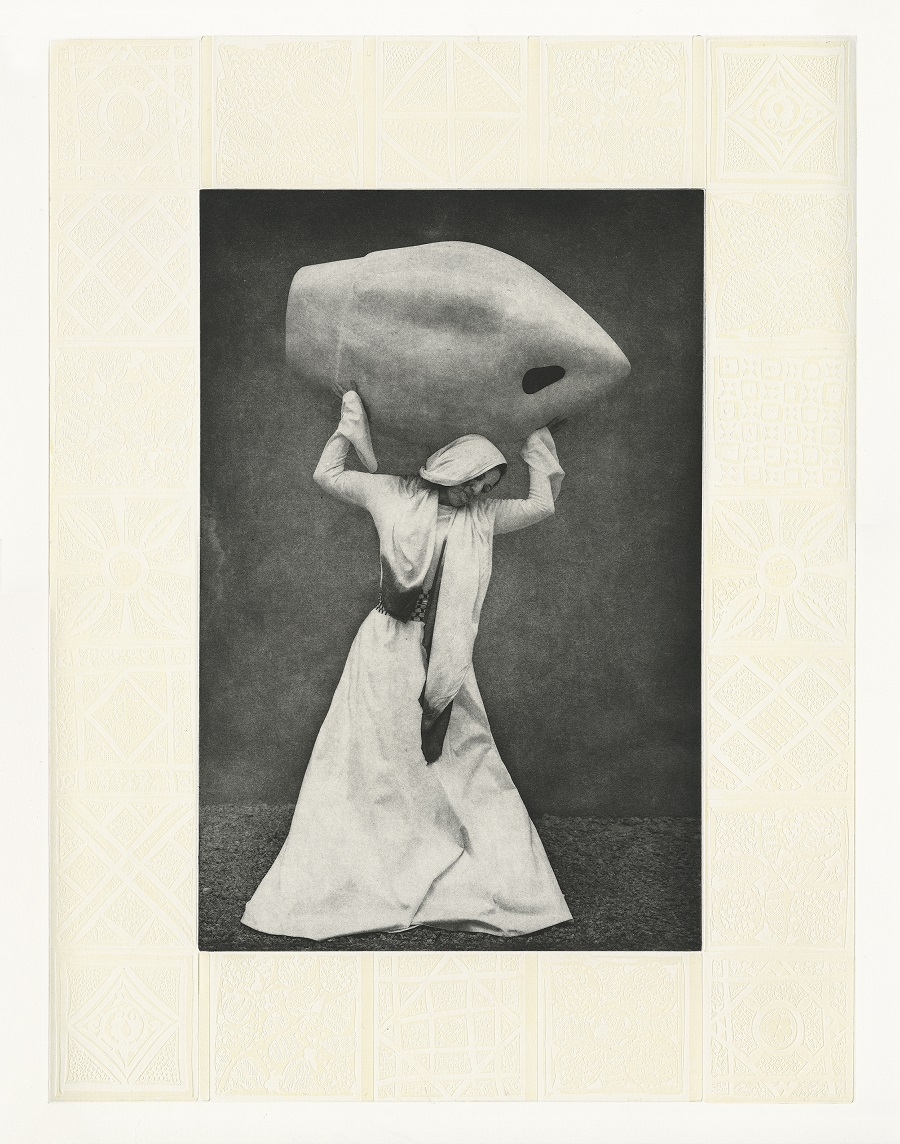
“Growing up in the United States was strange. We were a ‘different’ family in Iowa and there wasn’t a lot of diversity. But I grew up in a place with nice people,” Alshaibi tells Arab News from Bellagio, Italy, where she is doing a residency at the Rockefeller Foundation.
But she also says there were obstacles, mainly formed by major political events that impacted her. “It was challenging, because of where I’m from,” she says.
Alshaibi’s work is largely inspired by her Arab roots. “Arts were so revered in my family,” she says. “I don’t even know if I would be making art if it wasn’t for my heritage.” It was her father, an avid photographer, who taught her to use a manual camera. She aspired to become a photojournalist herself — inspired by 20th-century African-American photographers, notably Carrie Mae Weems and Lorna Simpson, who documented Black culture in their imagery.
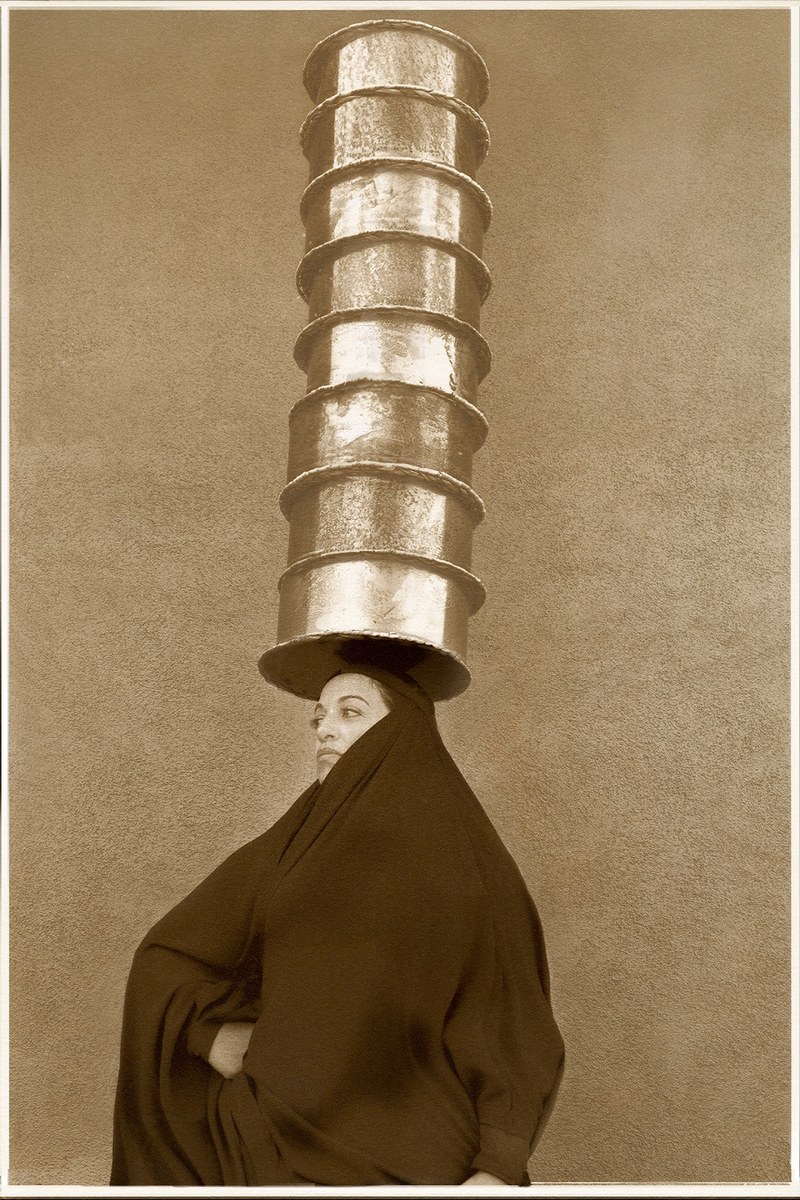
Many of her images are portraits of herself wearing, for example, traditional Middle Eastern garments, referencing romanticized Orientalist portrayals of women, and in the end, challenging them.
“I’m trying to change this idea of what you think an Arab woman is,” she explains. “I started seeing the power of communication, of taking political or social issues and using your body, your performance, your environment, to address them.”
One of Alshaibi’s best-known series is called “Carry Over,” in which she photographed herself carrying large objects (or Orientalist props), such as a tower of container tins or a water vessel, above her head. The images poetically show a woman’s endurance and comment on a collective history, affected by colonialism and cultural loss.
“I’ve always been interested in the notion of ‘aftermath’ — what happens after the destruction of your environment,” explains Alshaibi. “It gets you to the question of what we can’t hold onto anymore.”
REVIEW: ‘Returnal’ — a thoughtful and challenging sci-fi adventure
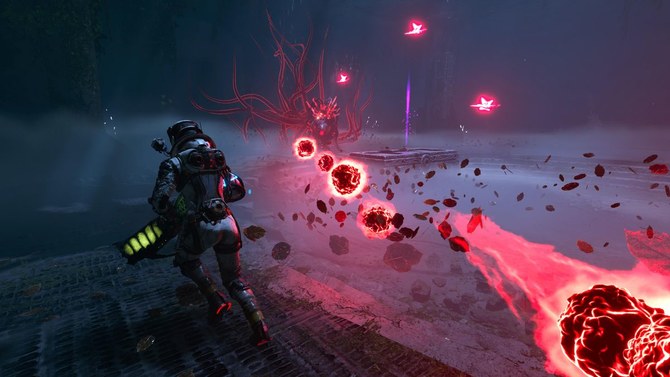
LONDON: Right from the start, before you even take control of Selene Vassos, a reconnaissance scout who has crash landed on a prohibited and mysterious planet, you are warned that “Returnal” (available originally for PS5 but now PC too) is “intended to be a challenging experience.” Such difficulty may deter the casual gamer used to a steady progression of character and exploration through a games environment. However, “Returnal” is a thoughtful and rewarding adventure that lays claim to much originality of thought in its set up. The key theme is that when you die, you return! But not to the same environment that you were in before. Instead, each new cycle postures new challenges and progress can only be made by unlocking upgrades that allow you to make more meta progress in Selene’s journey.
Selene herself is a super professional, unfazed character who doesn’t appear too bothered when she comes across a body of her former self that died in this strange world where the laws of physics and time appear not to apply. Staying alive is obviously crucial, particularly as it allows her to retain better weapons for longer. In addition, avoiding damage allows for boosts of agility, vision and more, making for a more lethal Selene. The environment is varied and surprising with each incarnation and the weapons on offer come complete with a range of exciting alternative fire mechanisms such as homing missiles or laser-like items. A hostile environment where even plants are a threat to life is mitigated by your technology, the core of which you can improve despite the reset of deaths, through fancy smart “xeno-tech” that becomes integrated with alien kit left around.
There is a paradox in “Returnal” described by Selene herself that she is trapped in an environment that is “always the same, always changing,” which literally makes no sense. Players have to be patient in the early chapters getting used to the sapping dynamic of death and return. Once that makes more sense, the loneliness of both her alien environment and the impossibility of even dying to escape it make for a pretty special atmosphere that a smart shooting engine then complements.









